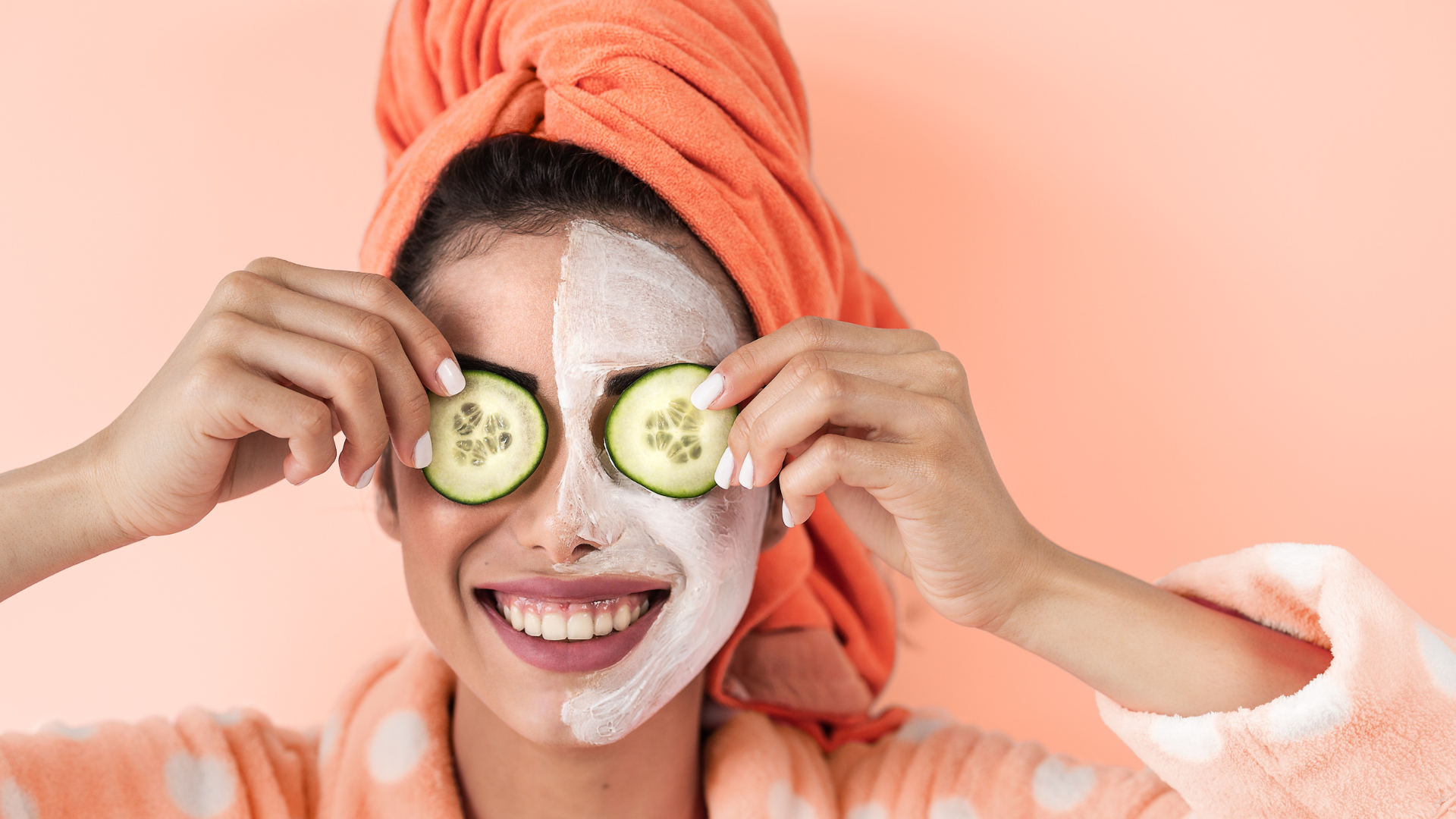The skincare landscape is evolving at breakneck speed, and 2025 promises to be a revolutionary year for beauty enthusiasts. From advanced biotechnology to sustainable packaging solutions, this year’s skincare trends represent a perfect blend of science, innovation, and environmental consciousness. Whether you’re a minimalist seeking the perfect streamlined routine or a tech enthusiast ready to embrace AI-powered beauty tools, these emerging trends will reshape how we approach skin health.

The Rise of Biotechnology in Skincare
Exosome Serums for Targeted Treatment
One of the most exciting developments in skincare technology is the emergence of exosome-based treatments. The best exosome serum for hyperpigmentation works by delivering cellular communication particles directly to damaged skin cells, promoting natural healing processes. These microscopic vesicles carry proteins and genetic material that can help reduce dark spots, even skin tone, and accelerate cellular regeneration.
PDRN Skin Rejuvenation
PDRN skin rejuvenation represents another breakthrough in biotechnology. Derived from salmon DNA, this ingredient promotes cellular repair and regeneration, making it particularly effective in addressing fine lines, acne scars, and improving overall skin texture. The science behind PDRN lies in its ability to stimulate fibroblast activity, resulting in increased collagen production and enhanced skin elasticity.
Fermented Skincare Ingredients 2025
Fermented skincare ingredients 2025 continue to gain momentum as consumers discover their enhanced bioavailability and gentler action. The fermentation process breaks down molecules into smaller, more easily absorbed particles while creating beneficial byproducts like amino acids and vitamins. Popular fermented ingredients include rice water, green tea, and various botanical extracts that offer improved penetration and efficacy.
Smart Technology Meets Beauty
AI-Powered Skincare Tools
The integration of artificial intelligence in beauty represents a paradigm shift in personalized skincare. AI-powered skincare tools can analyze your skin’s unique needs through advanced imaging technology, providing customized recommendations based on factors like skin type, environmental conditions, and aging patterns. These tools eliminate guesswork, offering precise insights that traditional methods simply cannot match.
Smart Beauty Devices 2025
Smart beauty devices 2025 are becoming increasingly sophisticated, featuring connectivity options that sync with smartphone apps to track progress and adjust treatment protocols. LED light mask home use devices now offer multiple wavelengths, programmable sessions, and progress tracking capabilities that make professional-grade treatments accessible at home.
At Home Red Light Therapy for Acne Scars
At home, red light therapy for acne scars has gained significant traction due to its proven effectiveness and convenience. Red light wavelengths penetrate deep into the skin, stimulating collagen production and reducing inflammation. The technology has become more affordable and user-friendly, making it an attractive option for those seeking clinical results without frequent dermatologist visits.
The Microbiome Revolution
Microbiome Friendly Cleanser
Understanding the skin’s microbiome has led to the development of specialized cleansing products. A microbiome-friendly cleanser maintains the skin’s natural pH balance while preserving beneficial bacteria that protect against harmful pathogens. These cleansers typically avoid harsh sulfates and incorporate prebiotic ingredients that nourish healthy microorganisms.
Probiotic Face Cream Benefits
Probiotic face cream benefits extend beyond basic moisturization. These products introduce beneficial bacteria to the skin’s surface, helping to strengthen the natural barrier function and improve overall skin health. Regular use can lead to reduced sensitivity, improved texture, and enhanced resilience against environmental stressors.
Postbiotic Skincare Routine
A postbiotic skincare routine focuses on the metabolic byproducts of beneficial bacteria rather than live organisms. These stable compounds offer similar benefits to probiotics while being more shelf-stable and suitable for sensitive skin types. Postbiotic ingredients can help regulate inflammation and support healthy skin barrier function.
Minimalism and Sustainability
Minimalist Skincare Routine for 2025
The minimalist skincare routine for 2025 emphasizes quality over quantity, focusing on multi-functional products that address multiple skin concerns. This approach, often called skinimalism skincare routine, typically involves three to five carefully selected products that work synergistically to maintain healthy skin without overwhelming it.
Clean Beauty Sustainable Packaging
Environmental consciousness is driving innovation in clean beauty, sustainable packaging. Brands are adopting refillable containers, biodegradable materials, and concentrated formulas that reduce packaging waste. This trend reflects growing consumer awareness about the environmental impact of beauty products.
Refillable Skincare Products Trend
The refillable skincare products trend addresses both environmental concerns and cost-effectiveness. These systems allow consumers to purchase product refills in minimal packaging, reducing waste while maintaining their favorite formulations. Many luxury brands are leading this initiative, making sustainability more accessible across price points.
Waterless Skincare Products 2025
Waterless skincare products 2025 represent a significant shift toward sustainable beauty. These concentrated formulations eliminate the need for water in production and packaging, resulting in more potent active ingredients and reduced environmental impact. From powder cleansers to solid serums, waterless products offer innovative textures and enhanced efficacy.
Advanced Ingredients and Formulations
Barrier Repair Innovations
Learning how to repair the skin barrier naturally has become a priority for many consumers dealing with sensitive or compromised skin. Barrier repair moisturiser 2025 formulations incorporate ceramides, fatty acids, and cholesterol in ratios that mimic the skin’s natural lipid composition, providing optimal repair and protection.
Hyaluronic acid barrier repair products combine the humectant properties of hyaluronic acid with barrier-strengthening ingredients, creating formulations that both hydrate and protect. These products are particularly beneficial for those with dehydrated or aging skin.
Revolutionary Active Ingredients
The skincare industry in 2025 is witnessing a surge of innovation, with ingredient-focused trends taking center stage. Beyond peptides, copper complexes, and bakuchiol, brands are also emphasizing barrier-repairing formulations that strengthen the skin’s natural defenses. Ceramides, hyaluronic acid, and niacinamide are being combined with new delivery systems that ensure deeper penetration, maximizing hydration and resilience against environmental stressors.
Another emerging focus is microbiome-friendly skincare, which prioritizes balancing the skin’s natural bacteria for long-term health. Probiotic and postbiotic cleansers, moisturizers, and masks are gaining traction, as consumers increasingly recognize the link between a healthy microbiome and glowing, irritation-free skin. This trend aligns with the growing demand for minimalist routines—where fewer, high-performance products replace complex 10-step regimens.
Sustainability also remains a defining factor in skincare trends for 2025. Eco-friendly packaging, refillable containers, and waterless formulations are becoming mainstream, reflecting a shift toward conscious consumerism. Brands are not only innovating with ingredients but also rethinking how products are delivered and consumed.
Finally, technology-driven beauty tools, such as AI-powered skin analyzers and at-home light therapy devices, are enhancing personalization. Consumers can now track skin changes in real time and choose tailored products for maximum results. This integration of science, sustainability, and self-care reflects the holistic direction skincare is heading in 2025.
Trending Natural Ingredients
Snail mucin trending skincare represents the growing acceptance of unusual but effective natural ingredients. Snail secretion filtrate contains beneficial compounds like glycolic acid, elastin, and antimicrobial peptides that promote healing and hydration.
Adaptogen-infused face mask products incorporate stress-fighting botanicals like ashwagandha, ginseng, and rhodiola to help skin cope with environmental stressors and maintain balance.
Achieving the Perfect Complexion
Mirror Skin Reflective Complexion
The mirror skin reflective complexion trend, originating from Korean beauty culture, focuses on achieving an ultra-smooth, glass-like finish. This look requires consistent use of gentle exfoliation, intensive hydration, and light-reflecting products that create an almost poreless appearance.
Specialized Product Categories
Sunscreen serum 2025 formulations combine UV protection with skincare benefits, incorporating ingredients like niacinamide, vitamin C, and peptides. These hybrid products eliminate the need for separate sunscreen and serum steps while providing comprehensive skin protection.
Eco-friendly sunscreen sticks offer convenient, reef-safe protection in sustainable packaging. These formulations typically use mineral UV filters and plastic-free containers, appealing to environmentally conscious consumers.
Nourishing Treatments
Vegan collagen moisturiser trends focus on plant-based alternatives that stimulate natural collagen production. These products incorporate ingredients like peptides, vitamin C, and botanical extracts that support the skin’s ability to produce its own collagen.
Collagen-boosting face oils combine nourishing plant oils with active ingredients that support collagen synthesis. These products provide deep hydration while addressing signs of aging through targeted nutrition.
Ceramide-rich moisturizer 2025 formulations incorporate advanced delivery systems that ensure optimal penetration of these essential lipids. These products are particularly beneficial for maintaining healthy barrier function and preventing moisture loss.
Challenges and Considerations
While these trends offer exciting possibilities, they also present certain challenges. The proliferation of high-tech devices requires significant investment and learning curves for consumers. Not all smart beauty tools deliver on their promises, and some may cause skin irritation if used incorrectly.
The emphasis on natural and fermented ingredients can lead to shorter shelf lives and potential contamination issues. Products containing live probiotics require careful storage and handling to maintain their effectiveness.
Sustainable packaging initiatives, while environmentally beneficial, often come with higher costs that may be passed on to consumers. Additionally, some eco-friendly packaging materials may not provide adequate protection for sensitive formulations.
The trend toward minimalism may not suit everyone’s skin needs, particularly those with complex skin conditions requiring targeted treatments. Finding the right balance between simplicity and effectiveness remains a personal journey.
The Future of Skincare
As we move through 2025, the skincare industry continues to evolve rapidly. The integration of technology, sustainability, and advanced science creates unprecedented opportunities for achieving healthier, more radiant skin. However, success lies in understanding your individual skin needs and making informed choices rather than following every trend.
The key to navigating these innovations is patience, research, and gradual implementation. Start with one or two trends that align with your skin concerns and lifestyle, then expand your routine as you discover what works best for your unique needs.
What is the most effective skincare trend for anti-aging in 2025?
The combination of peptide creams, copper peptide serums, and at-home LED light therapy shows the most promising results for anti-aging. These treatments work synergistically to boost collagen production and improve skin texture.
Are AI-powered skincare tools worth the investment?
AI-powered tools can be valuable for those seeking personalized recommendations and progress tracking. However, they work best when combined with professional dermatological advice and shouldn’t replace basic skincare fundamentals.
How do I know if my skin barrier needs repair?
Signs of compromised skin barrier include persistent dryness, sensitivity, redness, and products that previously worked well suddenly irritating. Barrier repair moisturizers and gentle, pH-balanced cleansers can help restore balance.
What’s the difference between probiotics and postbiotics in skincare?
Probiotics contain live beneficial bacteria, while postbiotics are the stable metabolic byproducts of these bacteria. Postbiotics offer similar benefits with better shelf stability and are often gentler for sensitive skin types.
Can waterless skincare products be as effective as traditional formulations?
Waterless products can be more effective due to higher concentrations of active ingredients. However, they may require adjustment in application technique and frequency to achieve optimal results.







